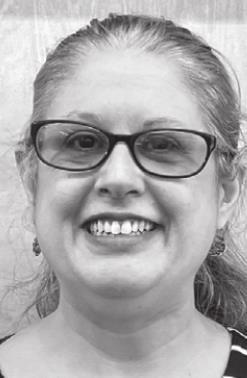
Answers to Go
San Marcos Public Library 625 E. Hopkins St. 512-393-8200
I just moved Q. to Texas and was wondering about some of the streets in San Marcos. Who was Burleson Street in San Marcos (and Burleson Road in Austin) named after and what did he do for San Marcos?
Gen. Edward Burleson was instrumental in the formation of the Republic of Texas and subsequently the State of Texas, Hays County and San Marcos. Gen. Burleson was an active soldier and statesman.
Gen. Edward Burleson was born in North Carolina in 1789, where he distinguished himself by fighting, at a tender age of 14, in the Creek War with his father and uncles. He married Miss Sarah B. Owens of Kentucky and in 1830 he moved his family to Texas. In March of 1831, he applied for and was granted title to a league of land, or 4428.4 acres, the full amount to which he was entitled as a married man arriving in Mexican Texas. As requested, his survey was located on the east bank of the Colorado River, 11 miles below the town of Bastrop near presentday Smithville. His title was recorded in Austin’s Register of Families, currently in the collection of the Texas General Land Office.
Gen. Burleson was involved in the Texas Revolution from the very beginning of the conflict with Mexico. He served in key roles throughout the duration of the war, from the Battle of Gonzales through the Battle of San Jacinto. He was at the battle of Gonzales where the “Come and Take It” cannon flag was raised and on Oct. 2, 1835 he saw the first cannon shot of the Texas Revolution. Throughout his military career he was supported by his soldiers. One particular story describes when Stephen F. Austin, in Nov.1835, was the commander of all the Texas forces. This was at the beginning of the Revolution. Austin was sent to the United States by the Provisional Government of Texas to enlist more troops and secure more money. A replacement for the command was needed, to be chosen by an election among the soldiers. Texas Army volunteers selected Burleson as their new commander-in-chief. He was commissioned by the provisional government on Dec. 1 with the rank o general.
By the end of 1835, Burleson’s first major action against Mexican Centralists was during the Texian siege of government forces in Bexar. Burleson fought well in the famous Grass Fight, which helped the Texans secure San Antonio. On April 21, 1836, Sam Houston decided to mount an attack near the San Jacinto River. Burleson’s first Regiment attacked from directly across the Mexican encampment, startling the soldiers from their otherwise restful afternoon. The Mexicans were trapped. The Texans overpowered them in under half an hour. About 600 Mexicans were killed and hundreds more captured, including Santa Anna. Only nine of Houston’s men died and about 30 were hurt. After this battle, the Texas Revolution against Mexico was over and the Republic of Texas was on the horizon. On March 2, 1836, Texas leaders signed the Texas Declaration of Independence.
Burleson was as much a statesman as he was a military man. He served Texas during the Republic as the fourth vice president under Sam Houston and was a candidate for the presidency of the Republic in 1844, but lost to Anson Jones. He was the last vice president of the Republic of Texas since Texas was annexed by the United states on Dec. 29, 1845. Burleson was one of the first senators of the State of Texas.
In 1848, Burleson moved with his family to Hays County and built a homestead just overlooking the headwaters of the San Marcos River. He was a member of the Texas Senate at the time and secured the passage of the bill providing for the formation of Hays County, with San Marcos as the county seat. He also donated land for the construction of the county’s courthouse. In 1851 Gen. Burleson, William Lindsey and Dr. Eli Merriman took possession of a 640-acre section of the Juan Veramendi grant and laid out the center of San Marcos. Burleson had the fist dam built across the river to obtain power with which to run a saw and grist mill. He died in Austin on Dec. 26, 1851, while he was a member of the Senate and was the first person buried in the Texas State Cemetery.
To learn more of Gen. Edward Burleson, check out his biography, “Edward Burleson: Texas Frontier Leader,” by John Holmes Jenkins.
Suzanne Sanders is the new columnist for the library. She is the Community Services Manager for the San Marcos Public Library and came from the Austin Public Library in 2015 after having served there as a librarian for over 20 years. She gratefully accepts your questions for this column.











